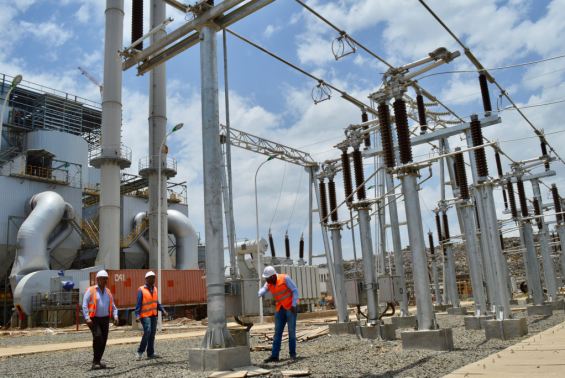
By William Davison
Ethiopia’s public investment in mega dams has been a bold attempt to make up for Africa’s power deficit. But despite some impressive achievements, doubts remain about the efficiency of those schemes, as the government leaves its comfort zone to try and attract private capital into renewable energy projects.
The stink of garbage and sheen of steel at the Reppie site on the edge of Ethiopia’s capital reflects the nation’s troubled past and, the government hopes, its gleaming future.
Addis Ababa’s open dump was the scene of a tragedy in March as a chunk of the unmanaged landfill collapsed onto shacks killing over 100 people. The incident exposed maladministration by city managers and a historic absence of vision for how to dispose of waste.
But on the other side of the site, beyond the locals still doggedly scouring the garbage for scraps of value, two giant chimneys loom over a stretch of the city’s ring road. These are the flues that will treat remaining noxious gases after garbage is incinerated at 1,000 degrees Celsius for two seconds in a state-owned Waste-to-Energy plant set to open this year.
As well as disposing of 1,400 tons of rubbish a day in an eco-friendly fashion, two turbines will also produce electricity from pressurized steam. Reppie, which can power 6 million light bulbs for 8 hours a day, should act as a “stand-by generator 24-7” for a city that suffers regular outages, said Samuel Alemayehu, the managing director of co-contractor Cambridge Industries. The $120-million incinerator is built to the same specifications as a scheme near London, according to the charismatic Stanford University graduate.
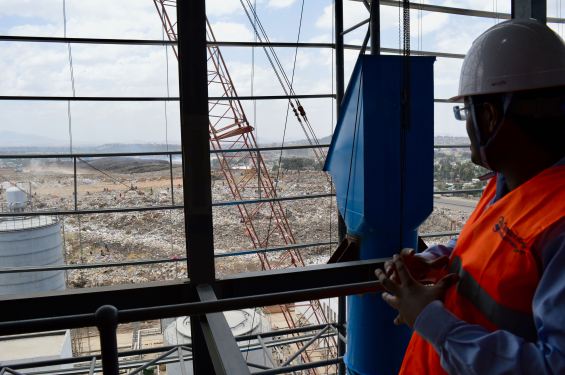
“There are many who questioned the decision to design the facility with full European Environmental Standards,” he said. “However, we didn’t want to build a plant for now, but a facility for the future.”
Such ambition is matched by the government of Africa’s second-most populous nation, which has been engaged in a bold energy development program over the last decade anchored on building large dams to generate electricity from hydropower.
International attention has often focused on the dams’ potentially negative downstream impact, particularly for vulnerable minority groups in southern Ethiopia, and Egyptians that rely on the Nile. But the government has been resolute in arguing that schemes like the much-criticized Gibe III will benefit Ethiopians overall, and that an ancient nation has long been denied the right to utilize the Nile waters that flow mainly from its soil.
Yet, while there are indeed reasons to defend and praise the state-heavy mission to make Ethiopia a regional powerhouse, much like at Reppie, eye-catching advances mask a murky reality of politicized choices that affect project efficiency and the strategy’s comprehensiveness. As major dams reach completion, the next few years will therefore reveal whether the multi-billion dollar investments become the catalyst for industrialization. Or whether that cash was in fact sunk into superficially impressive vanity projects that will act as a drag on economic growth. Much also depends on the fate of a so far stuttering effort to attract private capital into the sector, as an increasingly indebted government begrudgingly seeks more sustainable ways to fund power plants.
Bragawatts
In the never-ending circuit of talking shops about Africa’s under-development in upmarket hotels in Ethiopia’s capital, few pass by without criticism of the continent’s status as mainly an exporter of raw materials. If Africa is to finally reach its economic potential, a keynote speaker will pronounce, it must add value to its commodities; and for those industrial processes to take place, electricity is essential.
The case is irrefutable. Africa is estimatedto have 13 percent of the world’s population, but 48 percent of the share of people without access to electricity. In 2013, sub-Saharan Africa, excluding South Africa, had around 45,000 megawatts of installed generating capacity. That is only as much as the U.S. produces from solar power. Ethiopia’s government, to its credit, moved beyond the rhetoric bemoaning the inequity to take action. Nine river basins and an undulating topography mean it can produce maybe 45,000 megawatts from hydropower, giving it Africa’s second-largest potential from the resource after the Democratic Republic of Congo.
Since 2008, it has intensified its efforts and embarked upon the continent’s two largest projects: the recently completed Gibe III, and the Grand Ethiopian Renaissance Dam (GERD) on the Blue Nile, which may start generation next year. Ethiopia’s leaders hope these developments will power a nascent manufacturing drive, as well as bring in foreign currency from electricity exports. “The Growth and Transformation vision very well articulated that type of high-level vision,” Samuel said about a development strategy that began in 2010. “The trouble is the nitty-gritty.”
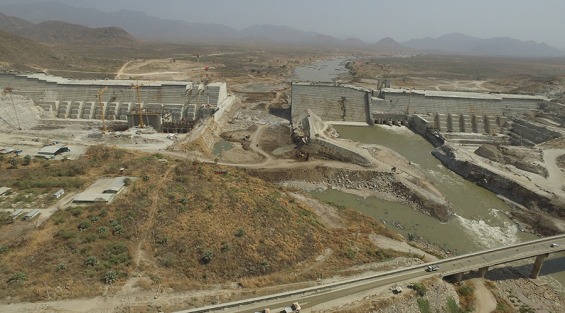
A chunky piece of that nitty-gritty is the efficiency of these mega dams. Media reports on the GERD, for example, have compared its output to four nuclear power stations. But that is a valid comparison of maximum generating capacity, not overall electricity production. While, for example, U.S. nuclear power stations can operate at full blast for over 90 percent of the time on average, hydropower is far spottier, as it relies on fluctuating rainfall. In the GERD’s case, it will produce 28 percent of the power it could do if it was constantly generating its maximum. With increasingly climatic volatility, others think the figure could be as low as 20 percent for the dam that was projected to cost 80 billion birr ($3.4 billion). The result is that while the 6,450-megawatt GERD is projected to annually emit 15,692 gigawatt hours (gwh) of electricity, the 2,200-megawatt Diablo Canyon Power Plant in California, which was built in 1985, churns out around 18,000 gwh a year. “These are bragawatts, not megawatts,” said an industry insider about misleading references to the GERD’s maximum generating capacity.
The context for this situation is that the GERD is much more than just a dam. When former Ethiopian Prime Minister Meles Zenawi selected the scheme, it was not simply a big project, but the biggest one conceivable. Studies had indicated the best option was a cascade of smaller dams on the Blue Nile leading towards the Sudanese border where the GERD is located. That would have been “cheaper and easier to manage” and may have produced more electricity, according to a consultant. But Meles’ decision to go for a single dam was not based on engineering or economics – it hinged on politics.
Studies had indicated a better option – ‘cheaper and easier to manage’ – would have been a cascade of smaller dams on the Blue Nile leading towards the Sudanese border.
For the state-building visionary, who passed away in 2012, the GERD was to be the symbol of the ‘Ethiopian Renaissance’ by demonstrating its ability to locally fund megaprojects. Although the details are opaque, GERD seems to have been financed mainly by state bank loans and bond purchases from citizens. The unilateral venture also signaled the end of Egyptian hegemony over the Nile, which had been marked in the 20th century by treaties that allotted the vast majority of water to Cairo. For centuries, Ethiopia, the source of most of the river, has sparred with Egypt, which relies heavily on the world’s longest watercourse, over its use.
Meles’ grand geopolitical gambit has thus far paid off, with patriotic Ethiopians supportive, and a distracted Egypt effectively paralyzed by the fait accompli. Yet the same cannot yet be said about the financial investment in what is an enormous and relatively inefficient power station.
Alternative Sources
More consistent schemes like Reppie will complement dams such as the GERD and Gibe III, which is expected to produce its capacity of 1,870 megawatts for slightly under half its operation time. They can potentially smooth the peaks and troughs from fluctuating hydropower so there is a constant supply of sufficient electricity. “It’s base-load power and makes sure the grid has alternative sources of energy,” said Samuel.
That type of reliable resource, which includes geothermal, is vital if Ethiopia is going to host the textile, leather and other factories that will provide some jobs for a bulging population. There are estimated to be at least one million people annually entering Ethiopia’s labor market and a population of 100 million is expected to almost double by 2050. More than 40 percent of the country is under the age of 15 and under-employed youth participated in unrest last year that was instigated by political grievances.
So far, the state-owned Ethiopian Electric Power (EEP) has overseen multiple hydropower projects and two wind farms, taking generating capacity to more than 4,000 megawatts. While a plethora of foreign contractors, consultants and donors swarm around the fringes of the sector, loans from mainly Ethiopian and Chinese state banks do the heavy lifting. For example, a $470-million advance from the Industrial and Commercial Bank of China paid for Gibe III’s turbines. That deal meant the government could ignore advocacy groups campaigning for multilateral banks not to support the scheme.
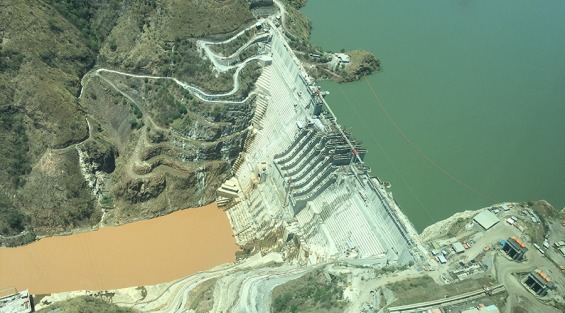
There has also been a focus on distribution with the World Bank funding a link to Sudan and a Chinese contractor connecting the GERD to Addis Ababa. The World Bank, the African Development Bank, French Development Agency and the two governments are financing a Kenya-Ethiopia transmission line that is a vital step in Addis Ababa’s goal of becoming a power hub.
Having completed these strides, Ethiopia is now looking for private financing to help develop untapped solar, wind and geothermal potential. “The past successful strategy will not be sustainable in the long term, both from a financial standpoint, as well as from a technological standpoint of putting all your eggs in one basket,” said Rahul Kitchlu, the World Bank’s Senior Energy Expert for Ethiopia. “The priority now is very much to diversify away from a reliance on hydro resources. This partly means the government embarking on public-private partnerships for energy, and also for railway and sugar projects, as large concessional loans look like they are becoming harder to obtain. Indeed, continued rapid development of the power industry may depend on this transition. But, to this juncture, the progress has been far from electrifying.
Steaming Ahead?
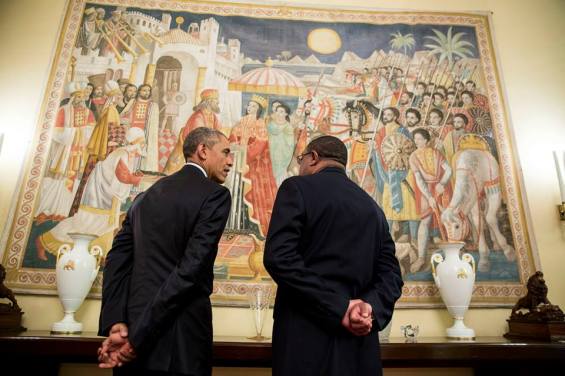
In 2015, with U.S. President Barack Obama’s arrival for a state visit imminent, EEP signed a Power Purchasing Agreement (PPA) with Reykjavik Geothermal for the nation’s first large-scale privately generated electricity project. The concept supported by Obama’s Power Africa initiative was straightforward. Icelandic engineers would team up with mostly U.S. investors to bore into a collapsed volcano in the Rift Valley and create steam power from the earth’s heat. The electricity would be purchased by EEP and fed into the grid. While requiring major investment, in Corbetti Geothermal Project’s case $2 billion, geothermal provides a 95 percent-efficient power source, making it an ideal ingredient in a hydro-dominated energy mix. But while the deal was first announced in 2013, four years later the flagship 500–megawatt initiative has still not dug its first exploration well.
A significant obstacle was the passing of a geothermal law last year that said projects would be transferred to government ownership at the end of the PPA period. That stipulation contradicted the 25-year deal signed as Obama prepared to touchdown, and investors balked. Other conditions also caused consternation. For example, the legislation said companies would need regulatory permission to dig each well, which was considered overly bureaucratic. And the authorities were slow to try and access a World Bank risk-financing mechanism that would guarantee payments to the Independent Power Producer (IPP) should the government have cash flow problems. The facility would have reassured investors worried about Ethiopia’s chronic hard currency shortage. Corbetti’s chief executive Steve Meyer said most of these issues are now “ironed out” and is confident the scheme has political support and will proceed. Despite his optimism, the delays have been significant. During the time Ethiopia struggled to get Corbetti underway, South Africa, after taking two-years to establish the legal and administrative frameworks, closed 92 IPP deals.
State-owned Ethiopian Electric Power (EEP) has failed to produce a detailed financial report for the last two years.
The problems are partly due to the weaknesses of a bloated and hierarchical utility company. Decision-making at EEP is sluggish and there are not enough empowered managers, according to individuals who work with the corporation. EEP executives are over-burdened and lack technical expertise. One consultant said even decisions to purchase cables now have to get board approval because of a lack of trust in the management. A donor representative said EEP has failed to produce a detailed financial report for the last two years. Such issues are typical of Ethiopia’s public sector, which is weakened by meager salaries, places a premium on political loyalty, and is partly an ethnic balancing act when it comes to senior appointments.
Military Power
Politics is also relevant at the top of an industry where veterans of the armed struggle exert considerable influence. EEP’s board is chaired by Debretsion Gebremichael, a minister who was a leading engineer for the Tigrayan People’s Liberation Front (TPLF) during the 17-year rebellion that ended with the Derg regime crumbling in 1991. The originally Leninist TPLF formed the core of the revamped military and founded the revolutionary ruling coalition that still dominates Ethiopian politics.
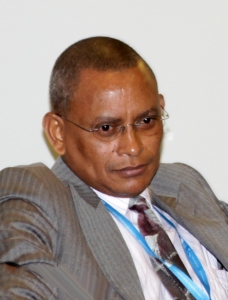
Debretsion oversees the GERD, whose electro-mechanical works were contracted to a conglomerate run by military officers. Lacking the requisite experience, that group, the Metals and Engineering Corporation (METEC), sub-contracted turbine construction to France’s Alstom and Germany’s Voith Hydro. While a foreign adviser says METEC’s role in the GERD has not caused problems, it has failed to deliver seperate sugar and fertilizer factories on time while pocketing substantial payments in advance. For years the ruling coalition has identified surging corruption as the primary domestic threat to realizing Meles’ development vision.
In an interview with The Reporternewspaper in March, Debretsion bullishly defended METEC’s role, arguing it helped stave off foreign pressure to downsize the GERD and was necessary to build domestic industrial capacity. He was also positive about the prospects for private investment in Ethiopian energy projects. But such views demonstrate the conundrums for Addis Ababa’s policy makers: despite the need for foreign capital, there are long-held suspicions from Marxist-influenced politicians about private profiteering; and the effort to rapidly boost energy production is sometimes at odds with aspirations to improve local engineering capabilities.
According to one energy consultant, these attitudes are a major obstacle to sustaining Ethiopia’s impressive momentum in the power sector, especially when it comes to facilitating the development of privately owned power plants. “There is still a question of whether at the highest level of the government they understand what an IPP is. It could have exploded with development if the right people were managing the economy,” the consultant said.




 Print
Print Email
Email
Average Rating